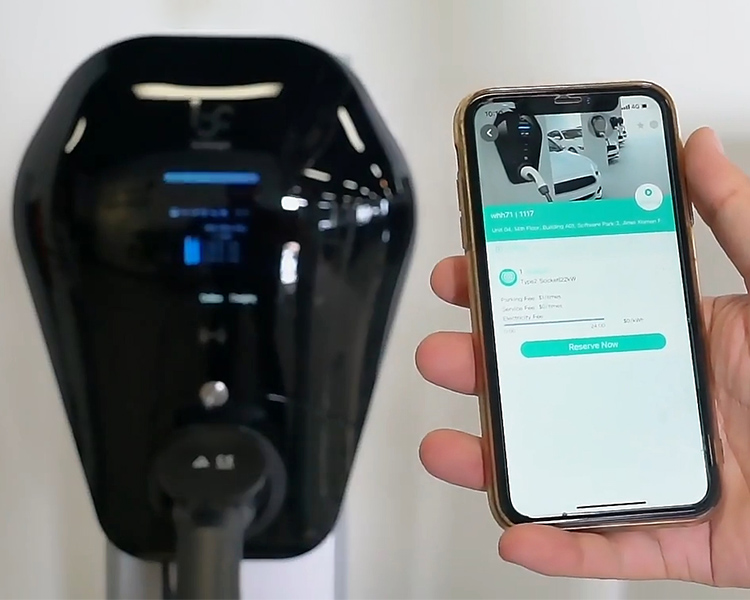
À medida que os veículos eléctricos (VE) se tornam cada vez mais populares, o carregamento passou a fazer parte do quotidiano de muitos condutores. No entanto, quando uma sessão de carregamento não corre como planeado - seja em casa ou numa estação pública - pode rapidamente tornar-se uma experiência frustrante. Este guia aborda os tipos mais comuns de problemas com o carregador de veículos eléctricos e fornece instruções de resolução de problemas do carregador de veículos eléctricos para os resolver. Assim, pode voltar à estrada com confiança.
1. Erros de ligação
Sintomas:
- A sessão de carregamento não arranca
- O carregador apresenta a mensagem "Ficha não ligada".
- O veículo alterna entre "Pronto a carregar" e "Não pronto".
Possíveis causas e correcções:
- O conetor não está totalmente inserido: Desligue e volte a inserir firmemente o cabo de carregamento.
- Ficha suja ou danificada: Inspecionar a ficha e a tomada para verificar se existem detritos ou corrosão.
- O veículo não está no parque: A maioria dos VEs necessita do modo Park para iniciar o carregamento.
- Falha no aperto de mão do software: Reiniciar o carregador e/ou ligar o veículo à corrente eléctrica.
Se estiver a utilizar uma estação pública, tente mudar para um carregador diferente ou contacte o operador de rede para obter assistência.
2. Falhas de pagamento
Sintomas:
- O carregamento não será iniciado nas estações públicas
- Cartão de pagamento não aceite
- A aplicação apresenta "Falha na transação"
Possíveis causas e correcções:
- Cartão/aplicação expirado ou não suportado: Certifique-se de que o seu método de pagamento é atual e suportado.
- Problema de comunicação de rede: Aguarde alguns instantes e tente novamente, ou mude para outro método de pagamento.
- Cartão RFID não reconhecido: Certifique-se de que está registado corretamente; se não estiver, utilize uma alternativa.
A maioria das redes de carregamento públicas oferece um serviço de apoio ao cliente 24 horas por dia, 7 dias por semana - não hesite em pedir assistência.
3. Carregamento lento
Sintomas:
- A velocidade de carregamento é significativamente mais lenta do que o esperado
- A carga completa demora muito mais tempo do que o habitual
Possíveis causas e correcções:
- Limitação do carregador de bordo: Alguns VEs carregam lentamente com energia AC. Verifique as especificações de carregamento do seu veículo.
- Balanceamento de carga: Em ambientes partilhados (como edifícios de apartamentos), a velocidade de carregamento pode ser reduzida.
- Tempo frio: As baterias carregam mais lentamente quando estão frias. Tente pré-condicionar o seu VE antes de o ligar à corrente.
- Cabo ou estação com defeito: Troque o cabo ou experimente outro ponto de carregamento para excluir problemas de hardware.
4. O carregador apresenta um código de erro ou uma falha
Sintomas:
- Luzes vermelhas ou indicadores intermitentes no carregador
- Mensagens de erro ou códigos no ecrã
Possíveis causas e correcções:
- Disparo do dispositivo de corrente residual (RCD): Isto pode indicar uma falha de terra - tente uma tomada diferente ou consulte um eletricista qualificado.
- Falha de hardware ou de firmware: Poderá ser necessária uma atualização do firmware ou assistência técnica. Contacte o fabricante ou o instalador do carregador.
- Irregularidades de tensão: A sobretensão ou a subtensão podem provocar a desativação do carregador por razões de segurança.
5. O carregamento pára inesperadamente
Sintomas:
- O carregamento termina prematuramente
- A sessão é interrompida e retomada repetidamente
Possíveis causas e correcções:
- O veículo terminou a sessão: Verificar no painel de instrumentos do veículo se existem avisos ou limites de carga.
- Ligação solta: Certifique-se de que a ficha está completamente inserida e fixa.
- Sobreaquecimento: Deixe o carregador arrefecer antes de tentar novamente.
- Flutuações de energia: Carregar durante as horas de vazio pode ajudar se estiver num circuito elétrico partilhado.
Dicas proactivas para evitar problemas de carregamento
- Inspecionar e limpar regularmente os conectores e cabos de carregamento
- Mantenha o firmware do seu carregador atualizado
- Registar antecipadamente os cartões RFID nas redes públicas
- Disponibilizar vários métodos de pagamento
- Monitorizar as sessões de carregamento através da sua aplicação EV, especialmente quando está fora de casa
Iocharger's carregador EV doméstico inteligente pode atualizar o firmware no portal Web do carregador, Aplicação móvel IOC Liteou através do sistema de gestão de carregamento IOC Lite, à distância.
O carregamento de um veículo elétrico deve ser simples; quando surgem problemas, saber o que procurar pode poupar-lhe tempo e frustração. A maioria dos problemas são menores e podem ser resolvidos rapidamente sem ajuda profissional.
Se a resolução de problemas não resolver o problema, não hesite em contactar o fabricante do carregador ou o seu fornecedor de serviços para obter assistência.
Ainda tem dúvidas ou está a ter um problema específico? Deixe-nos um comentário ou contacte a nossa equipa de apoio - estamos aqui para ajudar.
